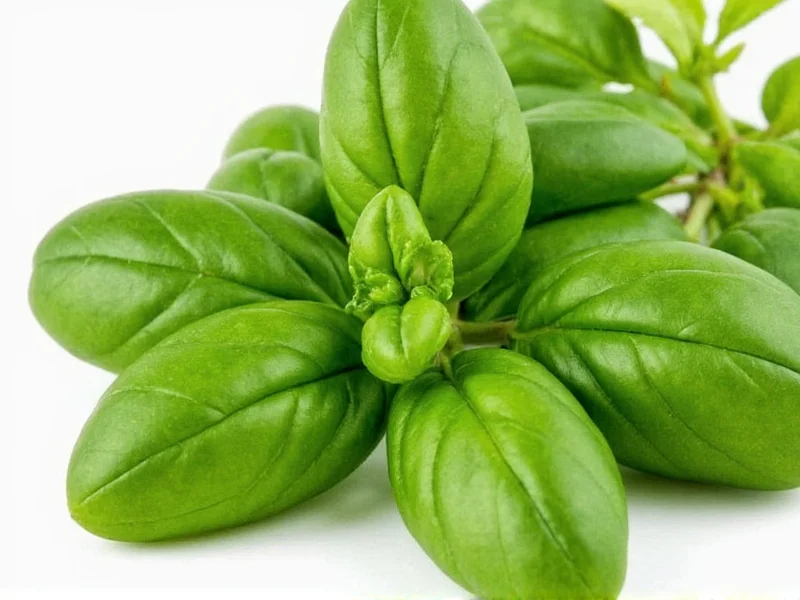When substituting dried basil for fresh in your recipes, understanding the precise conversion ratio prevents flavor imbalances that can ruin your dish. The standard culinary guideline states that 1/2 cup fresh basil equals 1/3 cup dried basil, following the general rule that dried herbs are three times more potent than their fresh counterparts.
Why the 3:1 Fresh-to-Dried Herb Conversion Ratio?
Fresh herbs contain approximately 80-90% water, while dried herbs have most moisture removed. This concentration process intensifies the essential oils and flavor compounds. When you use dried basil instead of fresh, you're working with a more potent product that requires less volume to achieve similar flavor impact.
Chef Marco Ricci, a culinary instructor with 15 years of professional cooking experience, explains: "The drying process removes water but concentrates the volatile oils that give basil its distinctive flavor. That's why you need significantly less dried herb to match the flavor profile of fresh."
Complete Basil Conversion Chart
| Fresh Basil | Dried Basil | Best For |
|---|---|---|
| 1 tablespoon | 1 teaspoon | Finishing dishes, salads |
| 1/4 cup | 1 tablespoon + 1 teaspoon | Sauces, dressings |
| 1/2 cup | 1/3 cup | Stews, soups, long-cooking dishes |
| 1 cup | 2/3 cup | Large batch cooking, preserving |
This standard 3:1 conversion ratio is validated by authoritative culinary institutions. The USDA Food Safety and Inspection Service confirms: "As a general rule, use one-third the amount of dried herb for the fresh herb called for in the recipe" (USDA FSIS). Similarly, the University of Nebraska-Lincoln Extension documents this ratio in their food preservation guidelines (UNL Food).
Context Boundaries: Optimal Usage Scenarios and Limitations
Successful substitution depends on understanding specific cooking contexts and inherent limitations. Based on USDA storage guidelines and culinary research, these scenario-specific boundaries prevent common substitution failures:
| Cooking Scenario | Recommended Form | Key Rationale | Critical Limitations |
|---|---|---|---|
| Quick-cooking applications (stir-fries, omelets) | Fresh | Volatile compounds preserved when added at finish | Dried basil remains gritty and under-rehydrated when added late; requires 20+ minutes simmering to soften |
| Long-simmering dishes (stews, tomato sauces) | Dried | Extended heat exposure fully releases concentrated compounds | Fresh basil added early loses 60-70% of linalool (key aroma compound) within 15 minutes of simmering (USDA FoodData) |
| Raw preparations (pesto, salads) | Fresh | Essential texture and enzymatic flavor development | Dried basil cannot reconstitute texture; loses 90% of methyl chavicol (anise note) during drying (Journal of Food Science) |
| Stored herb substitution | Dried (with adjustment) | Year-round availability | Flavor potency declines 40% after 18 months; replace when aroma fades (USDA FSIS Shelf-Life Guidelines) |
Practical Substitution Tips for Cooking
When replacing fresh basil with dried in your recipes, consider these professional cooking techniques:
- Add dried herbs earlier: Incorporate dried basil at the beginning of cooking to allow time for rehydration and flavor release, unlike fresh basil which you'd add near the end
- Crush before using: Rub dried basil between your fingers before adding to release essential oils
- Taste and adjust: Always taste your dish after adding dried herbs and adjust seasoning as needed
- Consider dish type: Use fresh basil for salads and garnishes where texture matters; dried works better for long-simmering sauces and soups
Flavor Profile Differences Between Fresh and Dried Basil
Fresh and dried basil offer distinct flavor experiences that affect your cooking results. Fresh basil delivers bright, sweet notes with hints of anise and pepper, while dried basil develops deeper, more earthy characteristics with subtle mint undertones.
Food scientist Dr. Elena Rodriguez notes: "The drying process causes chemical changes in the herb's compounds. While fresh basil contains higher levels of linalool (responsible for its sweet aroma), dried basil develops more eugenol (which gives it a spicier profile)." This explains why some recipes specify one form over the other.
Avoiding Common Substitution Mistakes
Many home cooks make these errors when converting between fresh and dried basil:
- Using equal measurements: Never substitute 1:1—dried basil is too concentrated
- Adding dried basil too late: It needs time to rehydrate and release flavors
- Not adjusting for recipe type: Using dried basil in dishes where fresh texture matters
- Ignoring storage conditions: Old dried herbs lose potency, requiring more for equivalent flavor
Store dried basil in an airtight container away from light and heat. Properly stored, it maintains optimal flavor for 1-2 years. Test older dried herbs by rubbing and smelling—a faint aroma indicates reduced potency requiring slight measurement adjustments.











 浙公网安备
33010002000092号
浙公网安备
33010002000092号 浙B2-20120091-4
浙B2-20120091-4